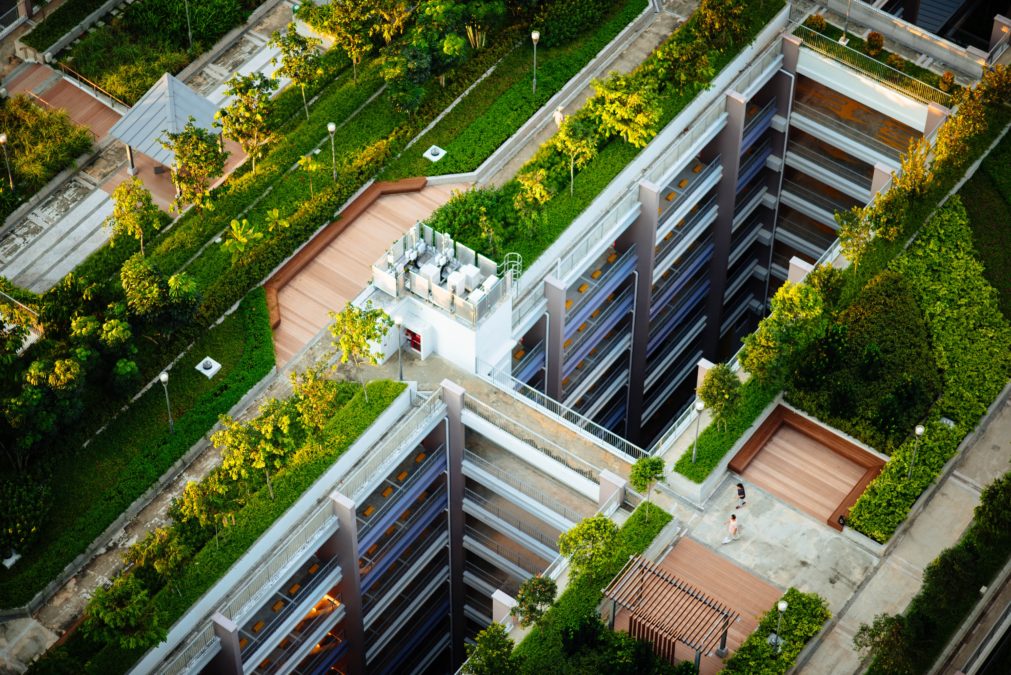A Green Retrofit Revolution to Decarbonise Existing Buildings
As COP26 starts this week, the pressing need to tackle the green retrofit of existing buildings is becoming even clearer.
Most of the buildings we currently use – around 75% – are expected to still be in use by 2050. Older buildings tend to have poorer energy performance and contribute to exceptionally high levels of greenhouse gas emissions. There is a real risk that many of these buildings will become unusable or unlettable, as Governments make energy and buildings legislation more stringent in the drive to net zero.
What’s more, as we gradually return to offices, schools and other buildings following the pandemic, occupiers and users are more much more aware of the impact of a building on our health and wellbeing. If the existing buildings we occupy and use aren’t brought up to modern sustainability standards, we’ll fail to achieve a green recovery and fail to get anywhere close to the carbon reductions we need.
Understanding the Challenge
So how can we bring about a green retrofit revolution and decarbonise existing building stock? The first step is to understand the scale of the problem, the difference between how much energy your building was designed to use versus the current regulations in force. Once you know this, you will need to be able to quantify the impact of potential improvements you could make, and the value of them in terms of reduced carbon and costs.
To do this, you need to have robust and independent data at your fingertips, allowing you model solutions which can show which green retrofit option works best for different types of building, in different locations around the world.
This immediately sounds intensive and costly in terms of time, for one building, let alone a for a portfolio of buildings. However the good news is that there are tools out there such as EDGE that have been specifically designed to do this for you. Our freely available EDGE App provides ready access to this independent data, and contains a list of efficiency measures that can help you make an existing building ‘greener’ – all related to local baseline data, building type, climate and so on,
These efficiency measures work with on the underlying principle that meeting net zero targets is not about offsetting the impact of buildings, but rather using the energy hierarchy to reduce the energy demand of the asset, improving its efficiency, then utilising renewable energy and finally moving towards the procurement of renewables and offsetting as the last resort.
Scaling Up
Whilst the retrofit of an individual building can be worthy in its own right, we need to look at retrofitting at scale to justify costs and improve payback. Addressing retrofit at scale is also a critical factor in getting close to addressing the carbon reductions we need.
Thankfully EDGE does not stop at one building. It is designed to provide a pathway to zero carbon for all building types and to be applied at scale for maximum impact and efficiency. Once you have completed a retrofit plan for one building, you can input information on all your existing buildings into the EDGE App and identify ways to improve the entire stock – identifying hot spots, groups of buildings that require similar retrofits and standard approaches that can apply to a larger group of buildings.
In this way, the EDGE App becomes a strategic tool, allowing portfolio owners to understand and report on overall impact, and make strategic investments. Crucially, it allows you to develop a compelling business plan for green finance and investment, which is increasingly beginning to regard credible net zero plans as a prerequisite for future financing.
The Role of Certification
Most projects funded by green finance will, of course, require independent recognition that genuinely ‘green’ measures are being implemented. This means for green retrofit, you will need to start by assessing current performance against robust, recognised benchmarks, and show that appropriate plans are in place that will bring carbon benefits. Ultimately, the green retrofit will need to be verified post-implementation, and, in the context of retrofit, certification can play an important role in validating against milestones over time, showing progressive improvements on the pathway to zero carbon.
So decarbonisation is not easy, it is a big challenge. However with the tools, support and collaboration that is now available, it is possible to take the first steps to a green retrofit revolution.
You can read more about the green retrofit of existing buildings using EDGE in our white paper ‘Decarbonising Existing Buildings – A Guide to Green Retrofit with EDGE, October 2021’





